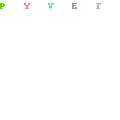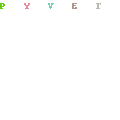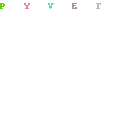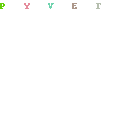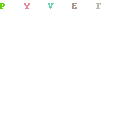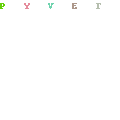Which plasma constituent is the main contributor to clotting?
- Albumin
- Alpha globulins
- Beta globulins
- Fibrinogen
Answer
Fibrinogen comprises 4% of the plasma and is an important component in the process of blood clotting.
Which of the following is not a function of blood? -protection from infection -transport of metabolic wastes -hormone production -homeostatic regulation
-hormone production Correct The blood does not produce hormones but does provide for their transport throughout the body.
Which plasma constituent is the main contributor to clotting? -albumin -alpha globulins -beta globulins -fibrinogen
-fibrinogen Correct Fibrinogen comprises 4% of plasma and is an important component in the process of blood clotting.
Which of the following plasma proteins is improperly matched with its function? -fibrinogen: clotting -alpha globulin: transport of metal ions and fat-soluble vitamins -gamma globulins: lipid transport -albumin: osmotic pressure
-gamma globulins: lipid transport Correct Gamma globulins are also called immunoglobulins (or antibodies) and are part of the immune response.
What triggers erythropoietin (EPO) production to make new red blood cells? -a high hematocrit -reduced availability -excess oxygen in the bloodstream -too many platelets
-reduced availability of oxygen Correct Reduced oxygen delivery to the kidneys will result in the release of erythropoietin (EPO), which in turn promotes the release of more erythrocytes from the bone marrow.
How many oxygen molecules can be transported by one hemoglobin molecule? -two -four -eight
-four Correct Each iron atom on a heme group can bind reversibly with one oxygen molecule.
Erythropoietin (EPO) stimulates the developmental process shown here. What part of the body does erythropoietin (EPO) target to increase erythropoiesis? -kidneys -lungs -liver -bone marrow
-bone marrow Correct The bone marrow, specifically red marrow, is the site of blood cell production and is stimulated by erythropoietin.
What erythrocyte production disorder results from an autoimmune disease associated with insufficient vitamin B12 absorption (step 6)? -pernicious anemia -hemorrhagic anemia -renal anemia -aplastic anemia
-pernicious anemia Correct A glycoprotein called intrinsic factor, produced by the stomach, is required to absorb adequate vitamin B12. Pernicious anemia results when the stomach does not produce adequate intrinsic factor, often because the cells that produce it are attacked by the body’s immune system.
Which of the following does NOT stimulate erythrocyte production? -hyperventilating -a drop in blood oxygen levels -erythroprotein -testosterone
-hyperventilating Correct Hyperventilating leads to an above-normal level of oxygen in the blood, which would not stimulate RBC production.
Bilirubin is released into the bloodstream as old or damaged red blood cells are broken down by macrophages. Which organ is responsible for removing bilirubin from the blood stream? -pancreas -spleen -liver -kidneys
-liver Correct As RBCs are broken down, the heme of their hemoglobin is split off from globin. Its core of iron is salvaged and stored for reuse. The balance of the heme group is degraded to bilirubin, a yellow pigment that is released into the blood. Liver cells pick up the bilirubin and in turn secrete it (in bile) into the intestine, where it is metabolized to urobilinogen. Most of this degraded pigment leaves the body in feces, as a brown pigment called stercobilin.
__________ is caused by a genetic mutation that results in the production of abnormal hemoglobin. Under low-oxygen conditions, the abnormal beta chains link together and form stiff rods that alter the shape of the RBCs. -leukopenia -polycythemia -thalassemia -sickle-cell anemia
-sickle-cell anemia Correct In sickle-cell anemia, the havoc caused by the abnormal hemoglobin, hemoglobin S (HbS), results from a change in just one of the 146 amino acids in a beta chain of the globin molecule. This alteration causes the beta chains to link together under low-oxygen conditions, forming stiff rods so that HbS becomes spiky and sharp. This, in turn, causes the red blood cells to become crescent shaped when they unload oxygen molecules or when the oxygen content of the blood is lower than normal. The stiff, deformed RBCs rupture easily and tend to jam up in small blood vessels. These events interfere with oxygen delivery, leaving the victims gasping for air and in extreme pain. Bone and chest pain are particularly severe, and infection and stroke often follow.
Which type of leukocyte provides protection against parasitic worms? -neutrophil -basophil -eosinophil -lymphocyte
-eosinophil Correct The most important role of eosinophils is to lead the counterattack against parasitic worms, such as flatworms and roundworms that are too large to be phagocytized.
Which of the following leukocyte is not correctly matched with its function? -neutrophils: produce antibodies -basophils: inflammation -lymphocytes: immune response against viral infections -monocytes: develop into macrophage
-neutrophils: produce antibodies Correct Neutrophils are active phagocytes that ingest bacteria and some fungi. Antibodies are produced by certain types of leukocytes.
Your patient has a hematocrit of 56%. You recall from your anatomy and physiology class that high hematocrits are often a sign of blood doping by athletes. However, your patient is an elderly man suffering from the flu. What is most likely accounting for his elevated hematocrit? -Your patient is on chemo and it is causing him to produce too many red blood cells. -He recently donated blood. -He is leaking blood into his abdominal cavity. -He is dehydrated from the flu.
-He is dehydrated from the flu. Correct If your patient is severely ill and not drinking enough fluids, especially if he has a fever, the ratio of cells to fluid will be shifted.
Which of the following is FALSE regarding the role of platelets in hemostatic reactions? -platelets do not stick to intact endothelial cells -platelets adhere to exposed collagen fibers -platelets release chemicals that attract and bind other platelets -platelets release the only chemical factors that can initiate coagulation
-platelets release the only chemical factors that can initiate coagulation. Correct Platelet chemicals initiate the intrinsic pathway, but tissue factors released from damaged endothelium start the extrinsic pathway for coagulation in motion.
What enzyme removes unneeded clots after healing has occurred? -fibrin -thrombin -plasmin -plasminogen
-plasmin Correct As healing progresses, the clot retraction process reduces the size of the clot, while plasminogen is activated into plasmin that digests the fibrin in the clot.
What protein involved in coagulation provides the activation for the final step in clotting? -thrombin -fibrinogen -prothrombin activator -fibrin
-thrombin Correct Thrombin catalyzes the conversion of fibrinogen into fibrin. This is the final step in coagulation.
Which of the following represents a difference between extrinsic and intrinsic blood clotting pathways? -One leads to the formation of prothrombin activator and the other does not. -One is faster than the other. -One involves calcium ions, while the other does not. -One can be triggered by tissue damage, while the other cannot.
-one is faster than the other. Correct The extrinsic pathway is faster than the intrinsic pathway, which has many intermediate steps.
Which of the following would NOT lead to a bleeding disorder? -vitamin K deficiency -thrombocytopenia -excess calcium in the diet -impaired liver function
-excess calcium in the diet Correct Calcium is essential for clotting pathways; a deficiency (not an excess) of calcium could lead to a bleeding disorder.
Which of the following statements is true? -A person with type O blood produces both type A and type B antigens (agglutinogens). -A person with type AB blood produces both anti-A and anti-B antibodies (agglutinins). -Type A blood can safely be given to recipients with type B blood. -Type O blood can safely be given to recipients with type B blood.
-Type O blood can safely be given to recipients with type B blood. Correct Type O blood, which does not contain either A or B agglutinogens, will not cross react with the anti-A agglutinins found in a recipient person with type B blood.
Which ABO blood type is considered to be the universal recipient? -AB -B -O -A
-AB Correct Type AB blood is considered to be the universal recipient because neither anti-A or anti-B antibodies (agglutinins) are present.
Which of the following scenarios could result in HDN (hemolytic disease of the newborn)? -A-positive female pregnant with a B-positive baby -B-negative female pregnant with an AB-positive baby -AB-negative female pregnant with an AB-negative baby -O-positive female pregnant with a B-positive baby
-B-negative female pregnant with an AB-positive baby Correct Hemolytic disease of the newborn (HDN) can develop when an Rh-negative mother carries an Rh-positive fetus. Unlike anti-A and anti-B antibodies, anti-Rh antibodies are not preformed (i.e., a person doesn’t produce them until they’ve been exposed to Rh-antigens for the first time). This initial exposure can occur when the Rh-negative mother carries her first Rh-positive baby. The first such pregnancy usually results in the delivery of a healthy baby. But during this pregnancy and particularly during delivery, the mother may be sensitized by her baby’s Rh-positive antigens that pass into her bloodstream. If so, she will form anti-Rh antibodies unless treated with RhoGAM during pregnancy and around the time of delivery. RhoGAM is a serum containing anti-Rh antibodies. By agglutinating the Rh factor, it blocks the mother’s immune response and prevents her sensitization. If the mother is not treated and becomes pregnant again with another Rh-positive baby, her antibodies will cross through the placenta and destroy the baby’s RBCs, producing the condition known as hemolytic disease of the newborn (HDN).
Choose the incompatible transfusion. -Donate type O blood to a recipient with type AB blood. -Donate type B blood to a recipient with type AB blood. -Donate type B blood to a recipient with type O blood. -Donate type A blood to a recipient with type AB blood.
-Donate type B blood to a recipient with type O blood. Correct A person with type B blood can only give blood to people of type AB and B blood. The type O recipient has anti-A and anti-B antibodies in their plasma, which would produce a transfusion reaction with the B-antigens from the type B blood.
Why was Mr. Watkins given PRBCs in addition to normal saline solution? What problem does the infusion of PRBCs address that the saline solution could not? -PRBCs contain hemoglobin, so they are able to carry oxygen to the tissues. -PRBCs enhance clotting, sealing off the injured vessels. -PRBCs increase blood osmotic pressure, making the infused fluid stay in the vessels rather than move into the cells. -PRBCs help restore blood ion composition to normal.
-PRBCs contain hemoglobin, so they are able to carry oxygen to the tissues. Correct The PRBCs contain oxygen-carrying hemoglobin. While the saline replaces lost blood volume, it cannot replace the hemoglobin in the lost RBCs.
Mr. Watkins’s blood type was determined to be A positive. Which of the following types of blood can he receive? -A positive, A negative, O positive, and O negative. -Only A positive and O negative. -A positive but not A negative. -A positive, O positive, and AB positive.
-A positive, A negative, O positive, and O negative Correct He can safely receive A and O blood.
Let us know if this was helpful. That’s the only way we can improve.
